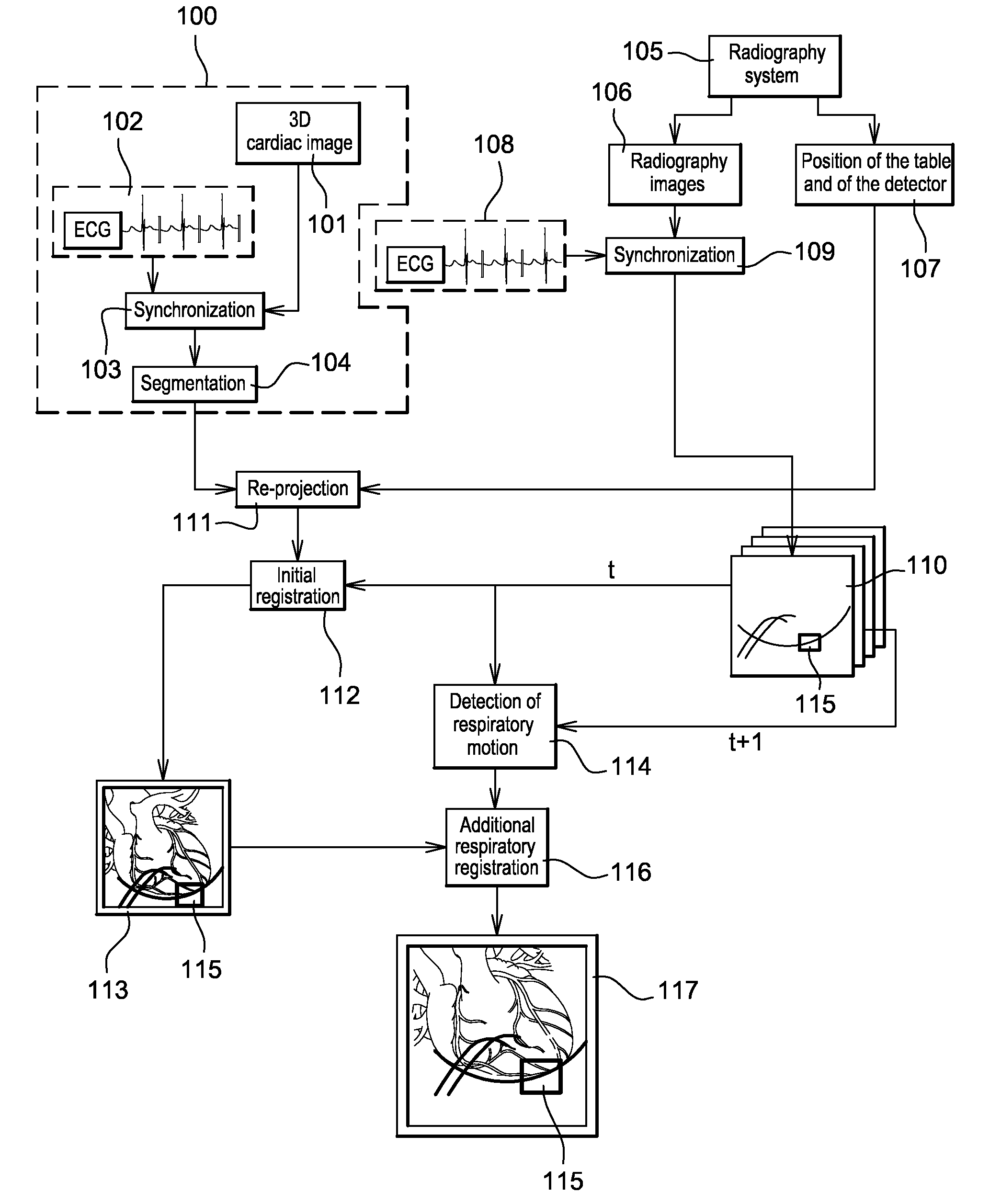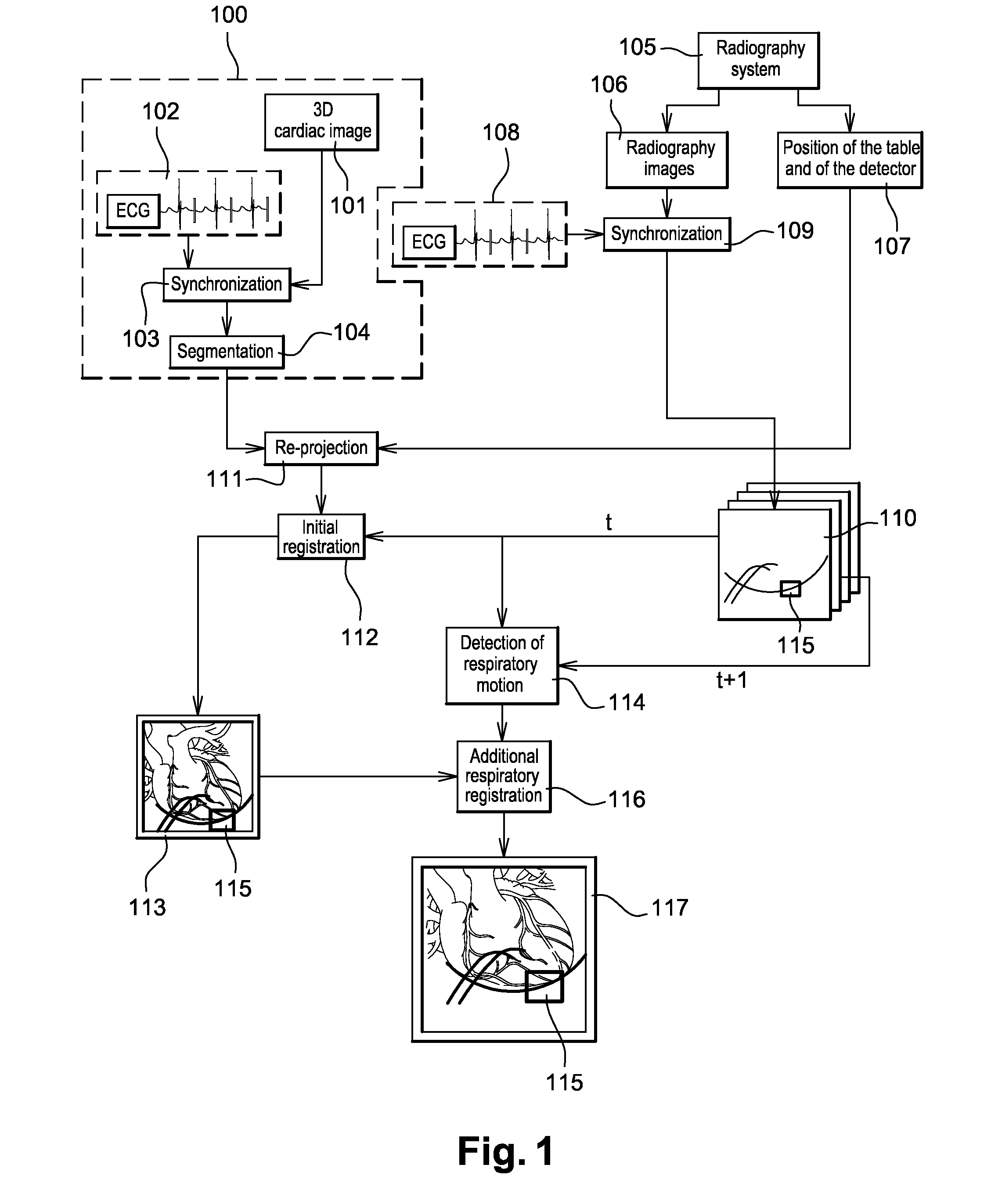Method of detection and compensation for respiratory motion in radiography cardiac images synchronized with an electrocardiogram signal
a radiography and cardiac image technology, applied in the field of medical imaging, can solve the problems of high degree of motion, inconvenient operation, and inconvenient monitoring, and achieve the effects of reducing tracking time, improving the success rate of catheter ablation procedures, and improving accuracy and simplicity
- Summary
- Abstract
- Description
- Claims
- Application Information
AI Technical Summary
Benefits of technology
Problems solved by technology
Method used
Image
Examples
Embodiment Construction
[0041]FIG. 1 illustrates means implementing the method for detecting respiratory motion in a cardiac image. The example of FIG. 1 can be used in a medical intervention procedure such as for example a procedure for the ablation of auricular fibrillation or a biventricular procedure.
[0042]In the example of FIG. 1, the X-ray apparatus (not shown) comprises both a 3D imaging system and a radiography imaging system. The radiography imaging system may be distinct or it may be included in the 3D imaging system.
[0043]The respiratory motion detection algorithm of the invention is implemented by a processor (not shown) of the X-ray apparatus.
[0044]The 3D imaging system may be, inter alia, a computerized tomography machine, a radiography system taking 3D images by rotation, magnetic resonance systems, positron-emission tomography (PET), ultrasonic systems, nuclear medicine systems and 3D radiography systems.
[0045]Before or during a medical intervention, the phase 100 is performed. This phase 1...
PUM
 Login to View More
Login to View More Abstract
Description
Claims
Application Information
 Login to View More
Login to View More - R&D
- Intellectual Property
- Life Sciences
- Materials
- Tech Scout
- Unparalleled Data Quality
- Higher Quality Content
- 60% Fewer Hallucinations
Browse by: Latest US Patents, China's latest patents, Technical Efficacy Thesaurus, Application Domain, Technology Topic, Popular Technical Reports.
© 2025 PatSnap. All rights reserved.Legal|Privacy policy|Modern Slavery Act Transparency Statement|Sitemap|About US| Contact US: help@patsnap.com


